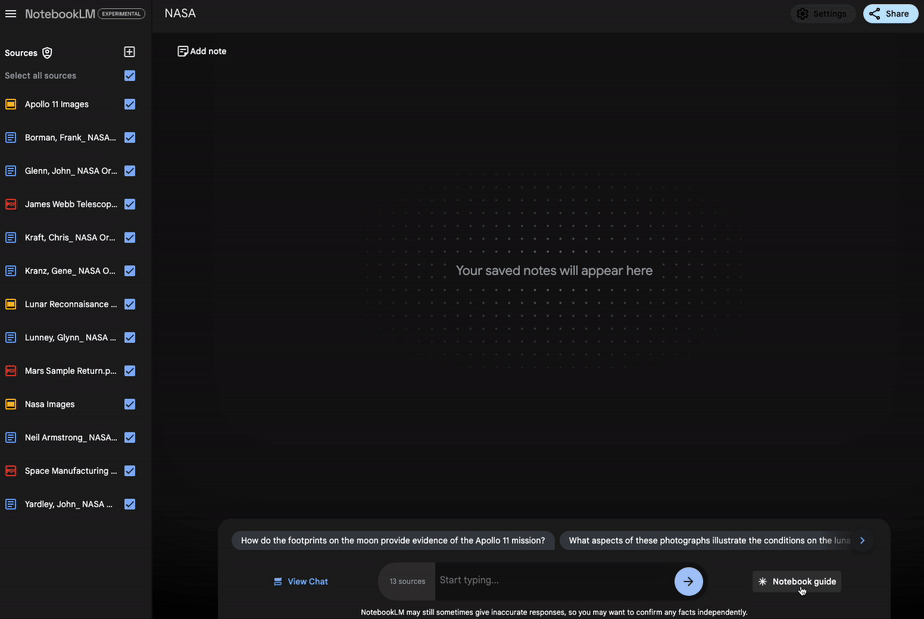Google AI Toolkit NotebookLM or AgentSpace Picking the Perfect Fit for Your Team and Use Case

The age of artificial intelligence is transforming how businesses operate, and Google is at the forefront with a sophisticated and interconnected suite of AI tools. For many leaders and developers, however, the landscape can seem complex. Two of the most powerful concepts to emerge are NotebookLM and the enterprise-wide vision of Google AgentSpace.
This blog post dives deep into Google’s AI Toolkit, breaking down the fundamental differences between NotebookLM and Google AgentSpace. We’ll explore how they work together to create a seamless path from raw data to automated action using a real-world SaaS company example. Whether you’re a business leader looking to empower your teams with smarter insights, or a developer tasked with building scalable AI solutions, this guide is for you.
Part 1: NotebookLM — The Starting Point for Insight
Think of NotebookLM as your team’s AI-powered research assistant. It’s a tool designed to help you synthesize complex information and become an expert on your own content. You provide the sources, and NotebookLM uses Google’s Gemini models to understand and analyze them, providing accurate, relevant answers grounded in your documents.
An End-to-End Example: Innoflow’s Bug Hunt
Let’s imagine Innoflow, a growing SaaS company, just launched a major new feature in their project management software. Soon after, they notice an influx of customer support tickets and negative comments on community forums. The data is scattered and unclear.
This is a perfect use case for NotebookLM. The product team creates a new notebook and uploads all their relevant sources:
A CSV export of support tickets from their CRM.
Transcripts from customer support chats in Google Meet.
Public threads from their community forum.
Even links to YouTube video reviews where users are demonstrating the issue.
Instantly, NotebookLM becomes an expert on this crisis. The team can ask, “What is the common theme in tickets created in the last 48 hours?” and get a summarized answer with citations. Using the auto-generated Timeline feature, they see the complaints spiked right after the “Phoenix v3.2” feature release. They have rapidly turned scattered data into a critical insight: a bug in the new v3.2 feature is causing data synchronization errors for users with over 500 tasks.
Deep Dive: Key Features of NotebookLM
Multi-Modal Source Grounding: Go beyond text. NotebookLM can ingest and reason across Google Docs, Slides, PDFs, website links, and even YouTube video transcripts.
Source-Grounded Accuracy: Every answer includes in-line citations that link directly to the specific passage in your source material, eliminating AI “hallucinations” and providing trustworthy responses.
Intelligent Content Generation: With a single click, NotebookLM can create useful formats from your sources, including a comprehensive FAQ, a chronological Timeline, or a detailed Study Guide.
Audio Overview: This unique feature transforms your source documents into a conversational, podcast-style “Audio Overview” with two AI hosts. You can even interact with the hosts verbally to ask follow-up questions.

Auto generated the Audio from your data source - one of the key features in NotebookLM
Part 2: The Bridge to AgentSpace — From Insight to Action
The Innoflow team now knows the problem. The next challenge is acting on it. Manually triaging every new ticket, creating bug reports, and updating stakeholders is slow and prone to error. They need to automate the entire response process.
This is where they move from the focused analysis of NotebookLM to the enterprise-wide automation of Google AgentSpace.

Google Agentspace Redefines how work gets done with a unified platform and interface
Deep Dive: Google AgentSpace’s Key Features
Task Automation: Build agents that can perform multi-step processes, such as booking appointments, processing customer orders, or managing inventory.
Interactive Experiences: Create dynamic, conversational AI for customer service chatbots, internal helpdesks, or in-app assistants.
Systems Integration: The true power of an AI agent is its ability to connect to other systems via APIs. An agent can be designed to fetch customer data from a CRM, update a project management tool, or trigger an action in a third-party application.
Part 3: Google AgentSpace & Workspace Flows — The Engine for Action
Google AgentSpace is an enterprise-grade platform that serves as a “central source of enterprise truth” for your organization. It’s a unified hub that breaks down information silos by connecting your company’s data and applications. It is built on three pillars:
Find: Leveraging Google’s search technology across 100+ enterprise apps like Salesforce, Jira, and Slack.
Understand: Using tools like NotebookLM for Enterprise for secure analysis and insight generation.
Act: Automating workflows with Google Workspace Flows, a new service that uses “agents in the loop” to handle complex, multi-step tasks.
The End-to-End Example Concludes: Automating the Bug Fix Workflow
Innoflow’s operations team now uses Google Workspace Flows to build an intelligent workflow:
The Trigger: The flow starts automatically when a new support ticket is created in their CRM, or a new conversation is started in their “customer-support” Google Chat space.
AI-Powered Triage & Routing: The first step, “Ask Gemini,” analyzes the incoming text. Based on a policy document, it determines the urgency. If it sees keywords like “v3.2 sync error,” it recognizes it as part of the known high-priority issue.
A Team of AI Agents (“Gems”): The flow now triggers a team of specialized agents:
An Engineering Assistant Gem takes the details and automatically creates a detailed bug report in Jira, populating it with the customer’s technical data.
A Communications Gem simultaneously posts a message in the “#dev-on-call” Google Chat space, notifying the engineering team of the new ticket.
A Customer Support Gem drafts a reply to the customer, acknowledging the known issue, providing a link to the public status page, and assuring them the team is working on a fix.
Human in the Loop: The drafted customer reply is routed to a human support agent for a quick review before sending.
Multi-Step Action: Once approved, the workflow sends the customer email, updates the Jira ticket, and logs the interaction in Salesforce, all from a single automated process.
This seamless, end-to-end process—from insight to action—is the core promise of this integrated platform.
Deep Dive: The AgentSpace & Workspace Flows Architecture
This powerful ecosystem is designed for users of all technical levels.
For Business Users (No-Code): You can automate simple tasks using templates or by describing what you want in natural language (e.g., “When a new Form response comes in, post it in the team space”).
For IT Admins & Analysts (Low-Code): Apps Script allows you to write custom triggers and actions for Workspace Flows, giving you granular control to connect your apps.
For Pro-Code Developers:
The Workspace Connectors Platform allows you to build deep integrations with third-party apps like Asana, Miro, and Mailchimp, making them discoverable across Workspace.
The Agent Development Kit (ADK), Agent Engine (on Vertex AI), and Agent Garden provide a full stack to build, deploy, and share robust, custom AI agents across the enterprise.
Conclusion: Your Starting Point in the AI-Powered Workspace
The choice between NotebookLM and an “AgentSpace” solution comes down to a simple question: Are you trying to understand information, or are you trying to automate action?
The choice is not about NotebookLM versus AgentSpace. It’s about identifying the right entry point for your needs.
Start with NotebookLM if your team is focused on research and generating insights from existing documents. It is the definitive tool for deep analysis.
Start with Google Workspace Flows if your team needs to automate multi-step business processes that involve reasoning, context, and connecting multiple applications.
Embrace the full Google AgentSpace vision when your organization is ready to create a unified, intelligent hub for all employees, breaking down data silos and deploying a true AI workforce.
By understanding the distinct roles within this powerful ecosystem, you can make a strategic decision that will not only solve today’s challenges but also propel your organization into the future of work.
Tags
Share
Related Posts
Quick Links
Legal Stuff

